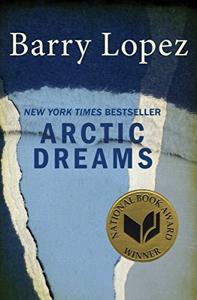
Want to learn the ideas in Arctic Dreams better than ever? Read the world’s #1 book summary of Arctic Dreams by Barry Lopez here.
Read a brief 1-Page Summary or watch video summaries curated by our expert team. Note: this book guide is not affiliated with or endorsed by the publisher or author, and we always encourage you to purchase and read the full book.
Video Summaries of Arctic Dreams
We’ve scoured the Internet for the very best videos on Arctic Dreams, from high-quality videos summaries to interviews or commentary by Barry Lopez.
1-Page Summary of Arctic Dreams
Overall Summary
Arctic Dreams is a travel memoir and nature writing by Barry Lopez. In the book, he recounts his experiences traveling in Alaska for four years. He hunts with Eskimos, accompanies scientists on field expeditions, and makes his own trips to study the wildlife of the Arctic. The narrative of Lopez’s own experience is interwoven with geological, biological, and human history of the Arctic region. The book makes a passionate plea for people to better understand this part of America.
In this book, Lopez describes his travels to the Arctic. He traveled there over four years by boat, canoe and foot as well as plane, snowmobile and sled. The ecosystem of the Arctic is only ten thousand years old (compared to human history) making it Earth’s youngest ecosystem. It is often considered a barren place but Lopez encourages us to think otherwise. A detailed description of how soil in the Arctic freezes and thaws was included along with information about icebergs, pack ice and field ice.
Most of Lopez’s writing focuses on the Arctic animals, which he describes with mystical devotion. He first shows us how birds fly in weightless acrobatics and then tells us about their migrations from Antarctica and Saudi Arabia. He narrates a fight between two male narwhals with ten-foot horns, explaining why they have spiral shapes. He follows a polar bear and her cubs for 10 months to watch their personalities develop as adults.
The author travels to the most remote places in the world and is tested by harsh conditions. He comes close to death when his clothes are soaked through and frozen, but he finds that his mind can distance itself from his body.
Lopez also talks about the Eskimos, who live in the Arctic regions. They are struggling to survive as much of their land is being taken over by industry and they’re having trouble adapting to the changes. Lopez cites extensive research on this topic to support his argument that 90% of them died from disease alone, brought over by Europeans and Americans during the 19th and 20th centuries.
Lopez admires the ways Eskimos have adapted to live in harsh conditions. He explains that Eskimos can rebuild their lives from scratch if they lose what they own, and he touches on how difficult life is for them psychologically. The carvings of an ancient people who lived in the Arctic are described as “grotesque and bizarre…tortured and psychotic,” reflecting the psychological impact of living there.
The author also tells the story of Arctic exploration, beginning with the semi-legendary voyage of Irish monk St. Brendan and ending with contemporary explorers like Wilfred Thesiger and Rockwell Kent.
In the nineteenth century, explorers left records of their expeditions. These accounts show a trend that troubles Lopez: they viewed the Arctic as an adversary to be bested. They wanted to map and label it in order to put it to use. This attitude persists today, says Lopez, who closes his book with a call for people to think about the Arctic differently—to view it more emotionally and imaginatively than we do now.
Arctic Dreams argues that we should not focus on human needs when exploring the Arctic. However, Lopez doesn’t get into arguments about whether or not people should develop in the Arctic. Instead, he creates a sense of what it’s like to be in the Arctic and how it feels to live there. It won awards for being one of the best books ever written about life in the North.






